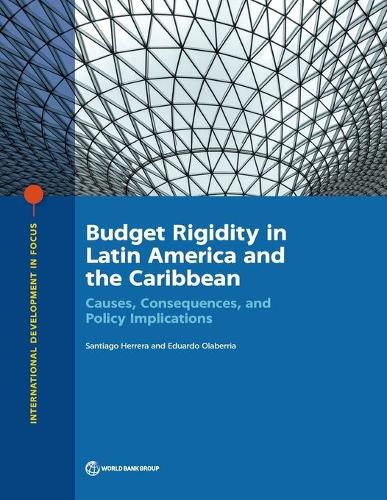Readings Newsletter
Become a Readings Member to make your shopping experience even easier.
Sign in or sign up for free!
You’re not far away from qualifying for FREE standard shipping within Australia
You’ve qualified for FREE standard shipping within Australia
The cart is loading…






Policy makers in Latin America and the Caribbean (LAC) often complain that poor fiscal performance in their countries is a result of a high degree of spending rigidity. Despite being a common complaint, the issue has remained largely ignored by the literature because of the lack of adequate measures of rigidity that allow cross-country and time series comparability. This report helps close this gap by introducing a new measure of spending rigidities that can be easily applied to multiple countries. It focuses on the categories of spending that are naturally inflexible-wages, pensions, transfers to subnational governments, and debt service - and separates them into two components: structural and nonstructural. The structural component is determined by economic, demographic, and institutional fundamentals. The nonstructural component is determined by short-run transitory factors associated with business and political cycles. The degree of rigidity of spending is then proxied by the ratio of structural spending to total spending, with a higher value indicating that spending is driven mostly by factors out of the policy makers’ control. This concept of rigidity was applied to 120 countries for the years 2000-17. The report concludes by discussing several policies to contain the sources of rigidity in the long term, ranging from the importance of deepening the pension reform process to the need of establishing strong fiscal institutions promoting medium-term fiscal planning.
$9.00 standard shipping within Australia
FREE standard shipping within Australia for orders over $100.00
Express & International shipping calculated at checkout
Policy makers in Latin America and the Caribbean (LAC) often complain that poor fiscal performance in their countries is a result of a high degree of spending rigidity. Despite being a common complaint, the issue has remained largely ignored by the literature because of the lack of adequate measures of rigidity that allow cross-country and time series comparability. This report helps close this gap by introducing a new measure of spending rigidities that can be easily applied to multiple countries. It focuses on the categories of spending that are naturally inflexible-wages, pensions, transfers to subnational governments, and debt service - and separates them into two components: structural and nonstructural. The structural component is determined by economic, demographic, and institutional fundamentals. The nonstructural component is determined by short-run transitory factors associated with business and political cycles. The degree of rigidity of spending is then proxied by the ratio of structural spending to total spending, with a higher value indicating that spending is driven mostly by factors out of the policy makers’ control. This concept of rigidity was applied to 120 countries for the years 2000-17. The report concludes by discussing several policies to contain the sources of rigidity in the long term, ranging from the importance of deepening the pension reform process to the need of establishing strong fiscal institutions promoting medium-term fiscal planning.